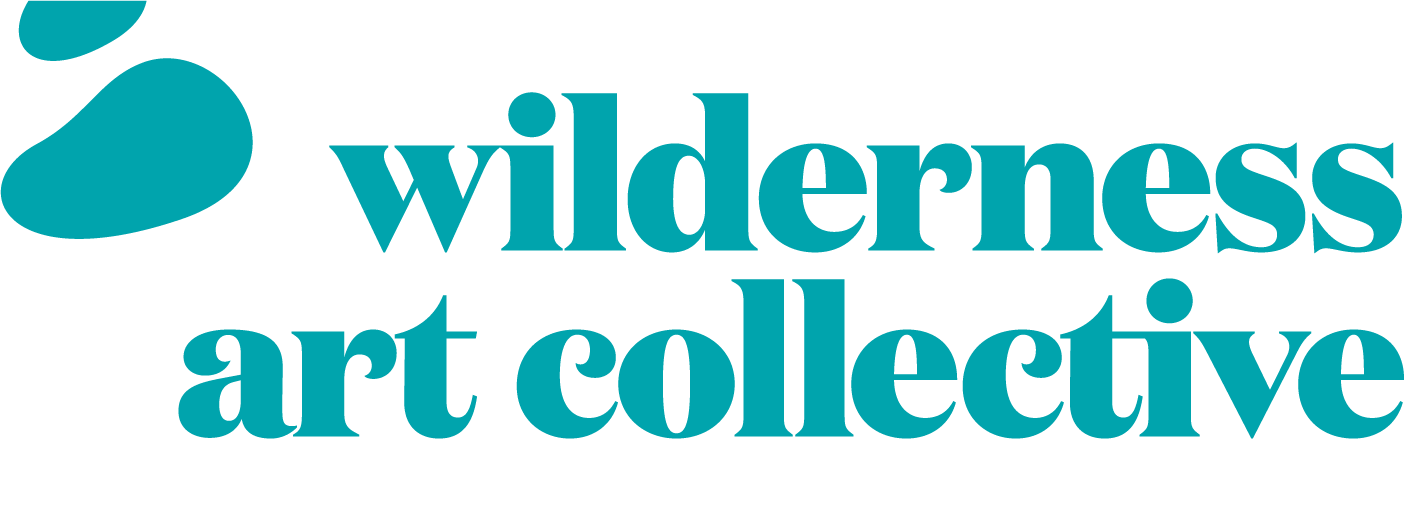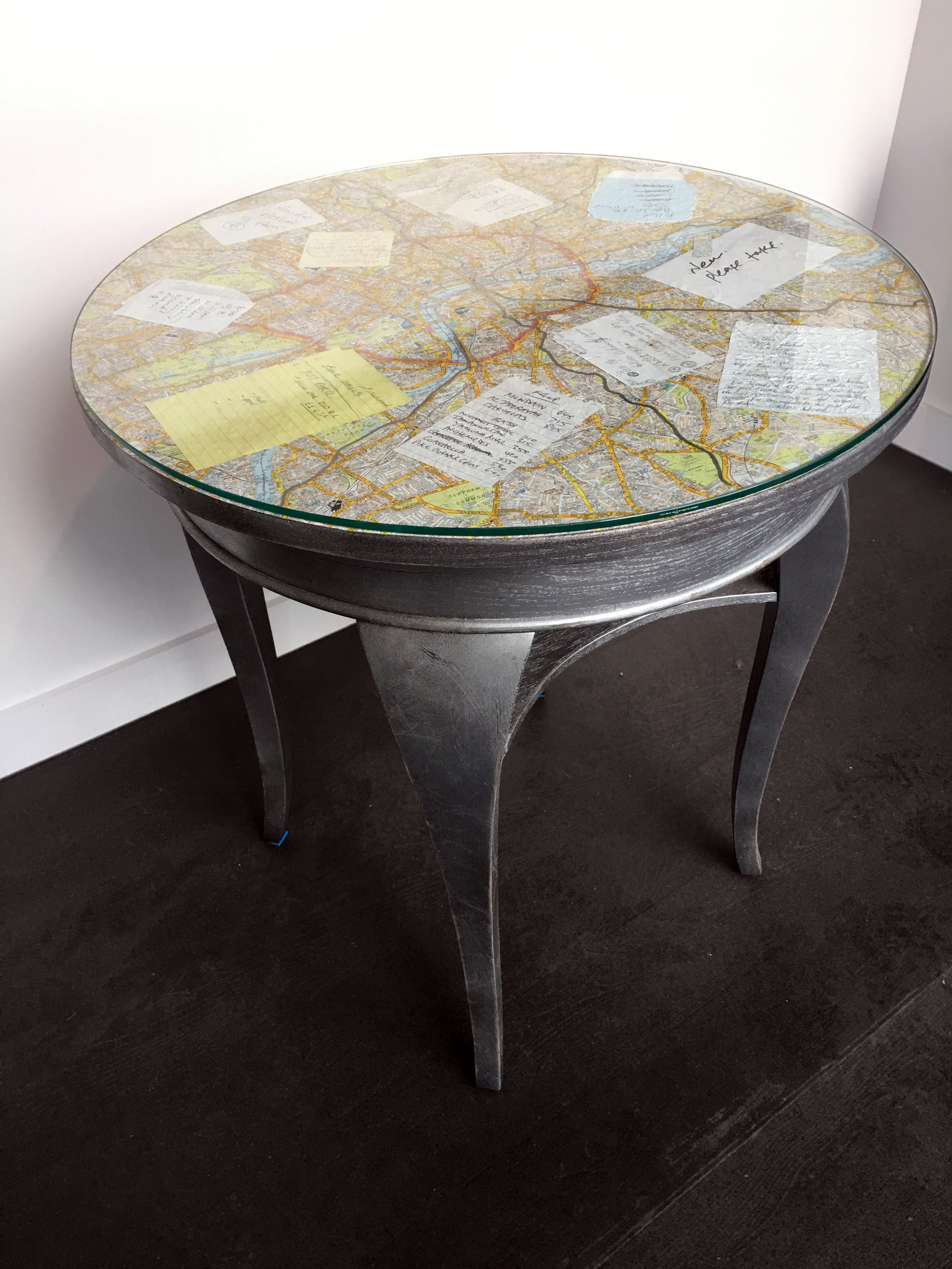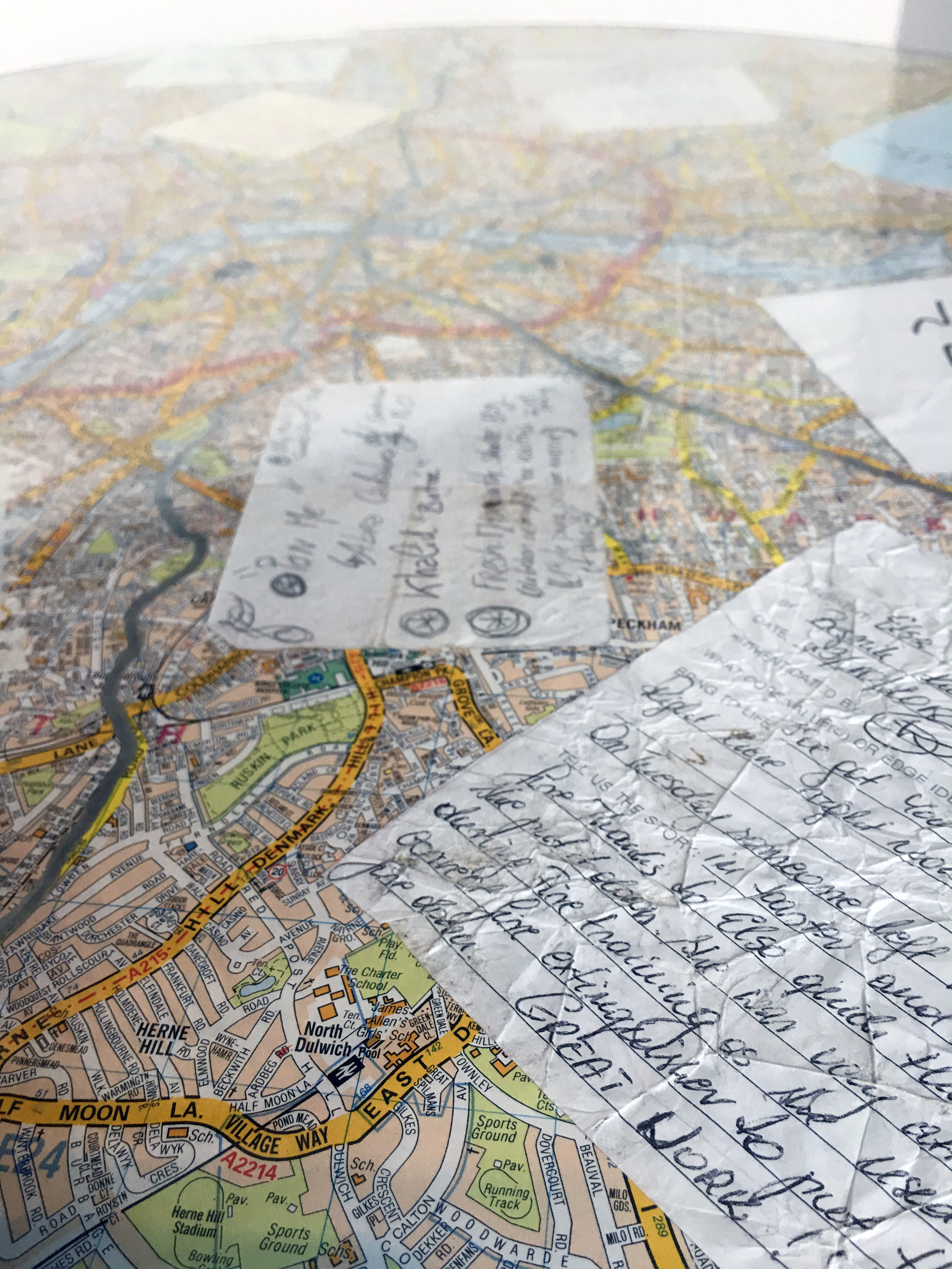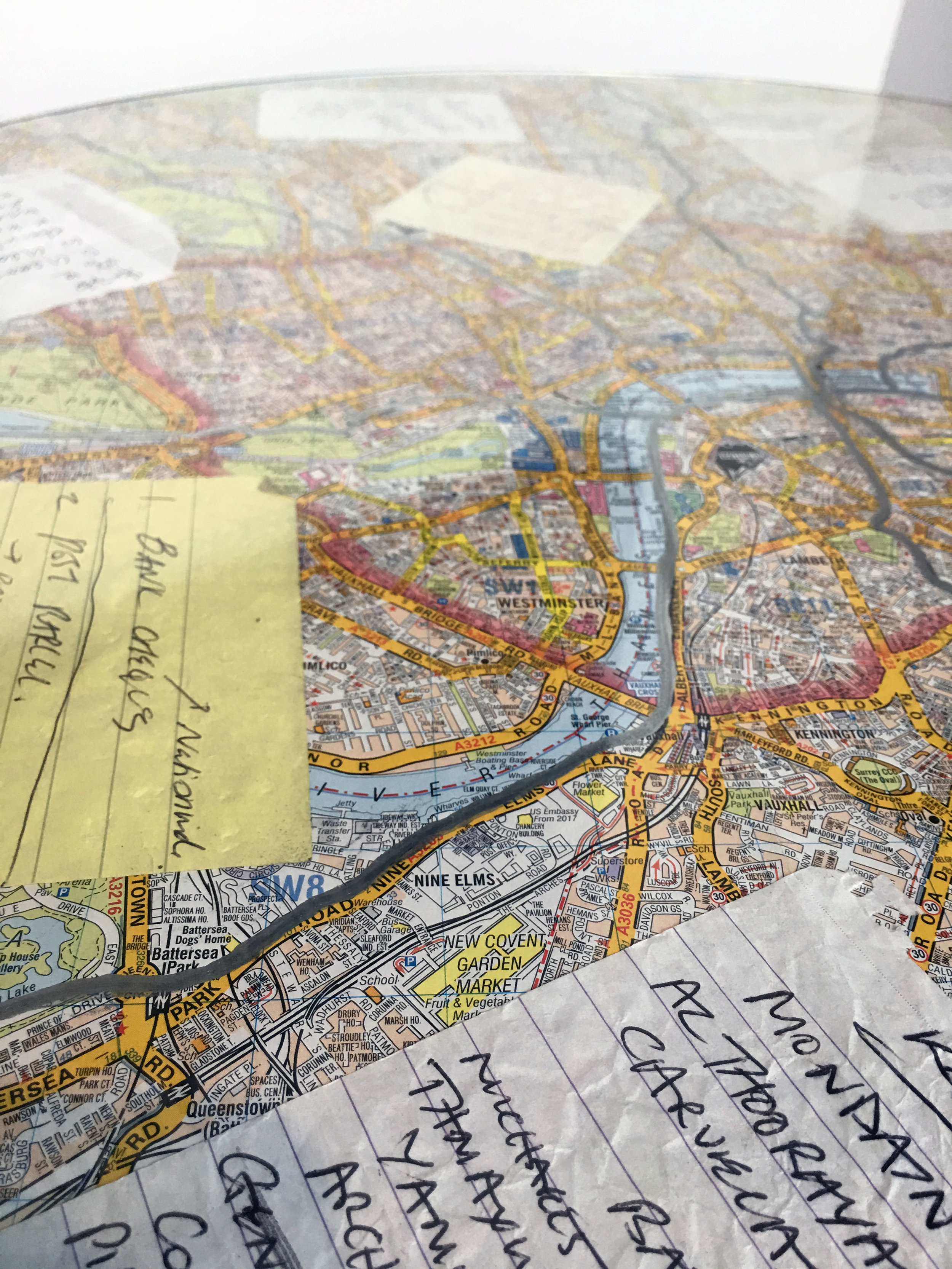Meet the Artist - Luke M Walker
Luke M Walker
by Peter Geraerts
We met in central London which was not what you’d initially expect when talking to one of the co founders of the Wilderness Art Collective. Luke is currently in residence at The Bankside Hotel on The South Bank so this provided an interesting opportunity for me to see how Luke has developed his art into where it is today.
Luke in his Residency Studio
Luke lives in London and is also an Interior & Spatial Designer and lecturer on Art & Design. He has been painting and exhibiting his works regularly since 2011 and completed an MA in Fine Art at City & Guilds of London Art School in 2014
He states that he isn’t a political artist but given his architectural background he increasingly looks at the end of life use of building material. He also looks at the potential disconnect between how buildings are designed and built and how they fit in with the local environment.
Initially I asked Luke about his involvement as a co founder of The Wilderness Art Collective. He sees it as a vehicle to inspire people - a call to attention for all of us. In so many ways now when we read or hear about the environment we are told in a negative way the effect we are having.
His belief is that we should be taking more of a positive view of it. He started painting mountains which developed from his love of climbing. Through his work he wants to connect and engage people in what is around us. As we discuss his work below it reinforces that connection can be made in the city or certainly in the landscape surrounding us.
He’s also seen it as a great opportunity to meet different artists with different perspectives and with new ways of documenting and experiencing the landscape.
Datascape 006 - ‘Two Palaces Walk’ Luke M Walker 2016
He is Co-curator of the Mountain Arts Festival, Community Action Nepal and is represented by The Contemporary Collective Gallery.
Living in London he has always been interested in his surroundings. One of those focal points has always been The Thames. Whilst most of us may just pass it by and accept it without a second thought it should be recognised that it can be a wild and dangerous part of London
It was whilst studying for his MA that he thought that The Thames would be a good theme for his studies. His interest developed so he started walking it
He has walked from Dartford at one end towards Oxford at the other. The Thames does extend further in each direction but for Luke and his studies it was more about the experience of the walk and the contribution to his art rather than completing every mile of the route from end to end. Going further wasn’t something that he thought would add to what he was looking for.
Whilst walking it he started to think and wonder how he could paint a walk. He started with sketches and photos along the walk with the coordinates noted down as reference points
As time went on the history of walking artists became the prevalent idea. One of his inspirations was Richard Long who mapped a hundred mile walk around Dartmoor.
Luke then developed this further in London by drawing a large circle on the landscape centred on St Pauls. It took four of five attempts to get a circular walk which happened to be about 12 miles. That was back in 2013.
The question on his mind then was still working on how he could paint the walk.
It was then on a trip to Copenhagen where there was an epiphanic moment when he thought about mapping the elevation of the walk.
Luke uses the chosen data points from various intervals along the walk of elevation and speed, he gave them the name ‘Datascape’ the first one being a circular walk around London
Luke developed this as can be seen in an early datascape of Carrock Fell in Cumbria. For me to see the data incorporated into the painting where the background referenced the colour of the heather in the landscape really lifts the image and I believe gives the data a 3D and textured feeling.
Once you can envisage the data points being used then I feel the paintings take on an additional feeling
Luke has many ideas of different walks for his datascapes but one of the attractions for him is that at the outset he doesn’t know what the outcome will be.
Datascape 003 - ‘And then there were three’ Luke M walker 2016
He tries not to prejudge the walk, instead waiting until he downloads the data from his walking app. If he can predict what he thinks the outcome will be then the painting loses its purity. By combining the painting and the data he is superimposing the real data on his experience.
The subject is still developing, there are certainly instances where the result does not turn out in a way that matches the different elements but surely that is the beauty and the art of it
It was interesting to see that Luke had a number of very varied projects on the go at one time.
Out of the circular walk he has developed a table top design with the map from his first datascape being set under glass. An interesting by product of the walk is that on his travels he has come across a number of discarded notes detailing messages where in certainly some instances the meanings need translating and certainly most are very curious.
These messages have then taken Luke in another direction where he is then getting the content of these notes etched onto copper. It’s fantastic to see how one idea can spawn others.
Something we are surrounded by in his workspace at his current residency are a number of large paintings, not just those inspired by his datascapes but of London and the surrounding buildings
Luke started painting about ten years ago. As a Londoner he is painting a living and changing city as it is right now and also from memory. With his residency it has enabled him more to develop his interest in the immediate environment.
Work in Progress 003 - Winner of the Signature Art Prize for Painting 2015 Luke M Walker
Given his background looking at the buildings surrounding him is something that must be inbuilt. His paintings are also of buildings that are important to him and that capture his experience of living in the city.
His view is that the painting always has to be about enquiry otherwise it becomes sterile. He takes pictures of the buildings nearby but moves the camera as he does so, allowing the element of chance to see what turns out and then painting it. There is no control over the outcome which for Luke is certainly one of the major appeals.
It’s also very noticeable that a lot of the paintings surrounding us are large. That is something quite intentional as Luke enjoys the action of painting and the movement as he dances around whilst doing so, much to the amusement of the builders working just outside the windows. The painting becomes more about the gestures and gives him the space to move.
I asked what pieces of his work Luke was most proud of.
One was his painting of the Tate Modern extension under construction which won him the signature art prize in 2015 and the other of one of his first datascapes of Carrock Fell in Cumbria.
For different reasons they were turning point paintings where he realised that something was working which then gave him further confidence.
Amongst all of this it is easy to see Luke’s enthusiasm in whatever he does. To assume that he looks at his art from one viewpoint would be quite wrong. Doing his MA gave him the mindset to question whatever he did. He is certainly doing that and I am sure that will continue to develop.
He also has plenty of plans for the future.
The Landlines exhibition at The Royal Geographic Society in September is looming large which is a real milestone for The Wilderness Art Collective but in terms of his painting many of them revolve around datascapes where walking will be the primary action. Even from the ideas he suggested it shows there are limitless variations to be worked upon.
In the short time we spent together I hope that I got to understand a small piece of what Luke does I’ll look forward to seeing the results of his work as it develops in the future.
The Bankside Table, made on residency at the hotel in partnership with Contemporary Collective. Documenting eight walks from the hotel undertaken at the start of the residency including some of the found notes collected by Walker on the routes.








